Equinamity-A Revolution in Horse and Rider Training
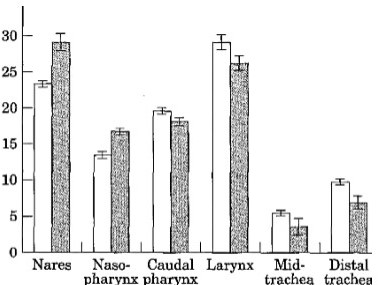
The authors provide the following comments on the above chart: “It shows that the nares, and the larynx were the sites of greatest resistance. Least resistance was found in the mid- and distal trachea. Reynolds numbers for the trachea increased with flow and rose from 28,000 to greater than 63,000 over the flow range used in the study. This indicates that even at low flow rates, some turbulence of airflow was created in the upper airway.”
The above image shows where obstructions are most likely to occur as well as their severity. A description of the methodology used to determine this outcome follows.
“SUMMARY
Effects of respiratory tract obstructions on ventilatory mechanics in horses exercising at high speeds were tested with a fibreglass replica of the airways (nares to mainstem bronchi) of an adult horse. Segmental pressures were recorded at six sites along the model at four different uni-directional flows (1300 – 4100 litre min-1), and the respective resistances (R) to airflow were calculated. The external nares and the larynx made the greatest contributions to the total resistance (RToT) when no obstruction was present”.
“In image shown above, relative contributions of resistances in different anatomical segments in a fibreglass model of the equine extrathoracic respiratory tract were made. This was for both a clear airway and pharyngeal lymphoid hyperplasia (PHL) condition determined using four different flows in the continuous flow preparation of the model.* Indicates a value that was significantly different to that generated at the same site with the other form of the model, Key: [] clear airway; • PLH model”.
There is a further essential point to note given its application to riders and trainers.The physiology of the horse is structured in such a way that there are two main areas of blockage. Which are shown above.
However, there is another main contributor to blockages on these two locations. They are created by the rider/trainer. How?
The methods used are shown in the next two images, via a) a tight noseband for greater control and b) tight reins creating hyperflexion-rollur.
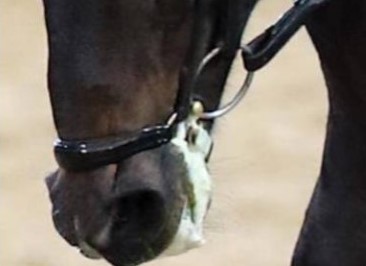
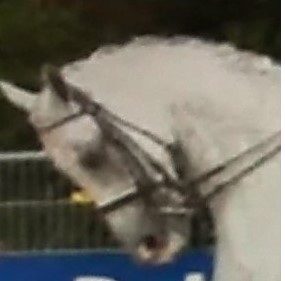
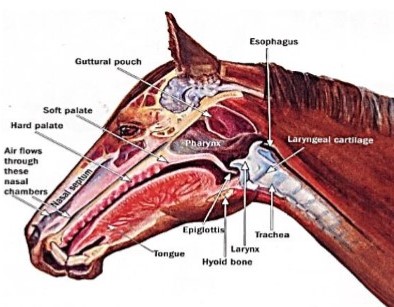
It can be noted from the above two charts the lkocation and identity of the two main areas of blockage. They are the nares and the larynx. These are precisely the two areas most affected by human intervention: the noseband in the case of the nares and the neck compression caused by the hyperflexion-rollkur in the case of the larynx.
This subject is analyzed further in the following extract, which was conducted 11 years after the first study quoted above and logically reflects new developments and technology.
“The airflow velocity and static tracheal pressure were comparable to data of horses exercising on a high-speed treadmill reported in recent literature. During inspiration, the area of highest turbulence (i.e. kinetic energy) was in the larynx, the rostral aspect of the nasopharynx was subjected to the most negative wall pressure and the highest airflow velocity is more caudal on the ventral aspect of the nasopharynx (i.e. the soft palate). During exhalation, the area of highest turbulence was in the rostral and mid-nasopharynx, the maximum positive pressure was observed at the caudal aspect of the soft palate and the highest airflow velocity at the front of the nasopharynx.
Conclusions and clinical relevance
In the equine upper airway collapsible area, the floor of the rostral aspect of the nasopharynx is subjected to the most significant collapsing pressure with high average turbulent kinetic during inhalation, which may lead to palatal instability and explain the high prevalence of dorsal displacement of the soft palate (DDSP) in racehorses. Maximal abduction of the arytenoid cartilage may not be needed for optimal performance, since the trachea cross-sectional area is 7% smaller than the rima glottidis.”
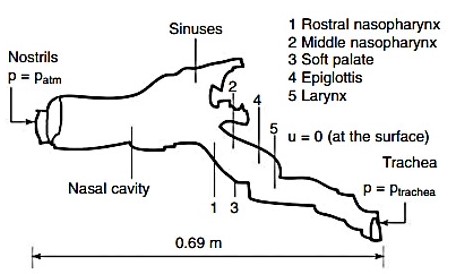
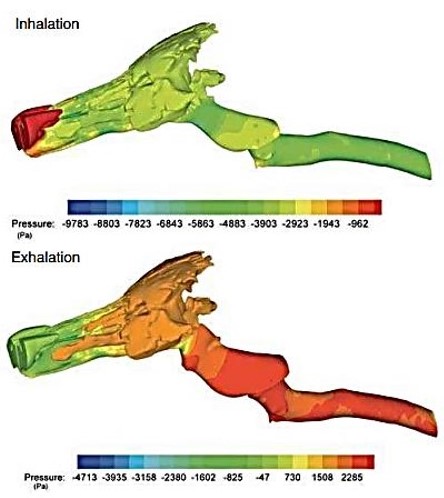

The velocity in terms of m/s may be more meaningful to have these figures (both minimum and maximum) converted to mph/kph.
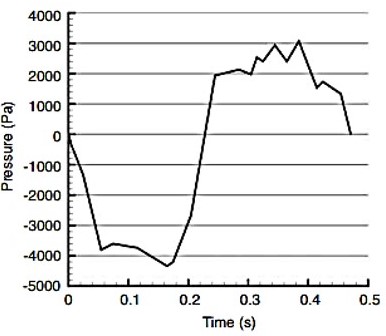
Pressure conversion from pa (pascals) to kg:
Both air pressure and speed combine to create turbulent kinetic energy. This is looked at next.
“What Is Turbulent Kinetic Energy? Turbulent kinetic energy is the quantitative measure of the intensity of turbulence for a given flow. It can be measured as the root mean square of the fluctuation in flow velocity. In fluid dynamics, it can simply be defined as the mean kinetic energy per unit mass for a turbulent flow. Mathematically, kinetic energy can generally be expressed as the following equation. Note that m= mass and v= velocity”.
The two following extracts explain this process further.
“The reason for high airway resistance is a loss of energy due to friction of the streaming molecules with the wall and between each other. In a narrow section, molecules stream closer together and to the wall, thereby increasing the friction.
Another reason for high resistance is friction caused by turbulence. Turbulent streaming particles flow not only forward but also sideways. Therefore, the molecules frequently hit each other and the wall, releasing kinetic energy. For that reason, strong turbulence provokes high airway resistance.”
“Introduction
The definition of airway resistance is the change in transpulmonary pressure needed to produce a unit flow of gas through the airways of the lung. More simply put, it is the pressure difference between the mouth and alveoli of the lung, divided by airflow.
Bernoulli’s principle mathematically states that when a gas flows through a tube whose diameter decreases, the velocity must increase. The pressure must decrease to the main volumetric flow (granted, other factors such as air density and temperature remain constant). In a healthy physiologic state, the airway divides and gets smaller and smaller. To maintain volumetric flow, the velocity will increase with each further division of the airway. As a result of higher velocity, the turbulent flow will increase, resulting in greater airflow resistance”.